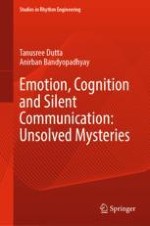2024 | OriginalPaper | Buchkapitel
4. Are Errors Indicative of Learning Strategies: Use It or Minimize It?
verfasst von : Tanusree Dutta, Anirban Bandyopadhyay
Erschienen in: Emotion, Cognition and Silent Communication: Unsolved Mysteries
Verlag: Springer Nature Singapore
Aktivieren Sie unsere intelligente Suche, um passende Fachinhalte oder Patente zu finden.
Wählen Sie Textabschnitte aus um mit Künstlicher Intelligenz passenden Patente zu finden. powered by
Markieren Sie Textabschnitte, um KI-gestützt weitere passende Inhalte zu finden. powered by
